This house, built with Logix ICF, narrowly escaped destruction in last year’s California wildfires.
By Vanessa Salvia
Across the nation, regardless of proximity to the state of California, people were transfixed by images and news stories of wildfires across the state during 2017 and 2018. According to statistics from California Department of Forestry and Fire Protection (Cal Fire), 505,956 acres burned during 2017, with an additional 876,147 acres burned during 2018. That’s more than 2,000 square miles. The 2018 Camp Fire, which started in Northern California’s Butte County, and decimated the town of Paradise, burned 18,804 structures and caused 85 deaths. Napa and Sonoma county’s Tubbs Fire burned 5,636 structures. There were dozens of other fires also.
Readers of this magazine likely know that had those structures been built of ICF, far fewer of them would have been lost. The mission of the ICF industry is to share this message with those affected as they begin to rebuild. Some California builders and homeowners are doing just that.
Allen Winters, licensed contractor and owner of Allen Winters Concrete, has lived in Sebastopol his entire life. His father owned the local ready mix plant, so the young Winters grew up seeing the Santa Rosa hillsides sprouting with homes. During the 1960s and early ’70s, Winters’ own ready mix company supplied concrete for about 2,000 homes in the high-end Fountain Grove area of Santa Rosa.
He remembers being a 10-year-old boy watching Santa Rosa burn in 1964. Fifty-three years later, looking at basically the same view of Santa Rosa, his family got a call at two in the morning saying relatives were being evacuated. “I’m out on the porch where I can look at everything,” Winters recalls. “I can hear a propane tank blowing up and then it hits Coffey Park, a subdivision of over 1,500 houses and wipes them all out.”
Winters says a firefighter clocked that fire moving at 38 miles an hour. The fire moved through brush and dry grass, and when it encountered a population of houses all made out of wood, the fire would blow up in size. “We’ve got a partial solution here,” says Winters, “which is by building with ICF instead of wood framing we can protect the house.”
Rebuilding with Concrete
John McGarva is one California homeowner who has taken this to heart. McGarva, owner of McGarva Construction, bought a new house in Santa Rosa 13 years ago. The home was stick-built, but with a concrete tile roof and stucco siding. When the fire hit he and his family were camping on the coast. They didn’t know for five days whether their house had survived. It had not.
Prior to working as a commercial general contractor, McGarva had been involved in residential construction and felt familiar with concrete, although the idea of using foam panels was new to him. After working on large municipal structures, McGarva knew that there are many things you can do with concrete that you can’t do with wood, but he says, building homes with a concrete envelope “just never took off.” Last year, IntegraSpec ICF had a presence at a home show McGarva attended, and he got to talking with a representative. His new home uses IntegraSpec and Insul-Deck.
“When I found out IntegraSpec was actually doing roofs and floors in concrete I got more interested,” he says. “We’re in a wildland interface zone (defined as areas where homes are built near or on lands prone to wildfire) so we needed something that won’t burn and I knew this was a chance to build more with concrete which I’d always wanted to do.”
Insurance (through State Farm) hasn’t been hard to get, but surprisingly, there’s very minimal cost difference between his wood home and his 7,000-sq.-ft. ICF home, even though his ICF home won’t burn. (The insurance cost difference is in the annual premium cost for a bit more coverage than he had before) “I made that point to the powers that be more than once,” he says. “I had a $2.5 million claim on my home in a wildland interface zone and now I built a house that can’t burn and they told me my savings were $100 a year.”
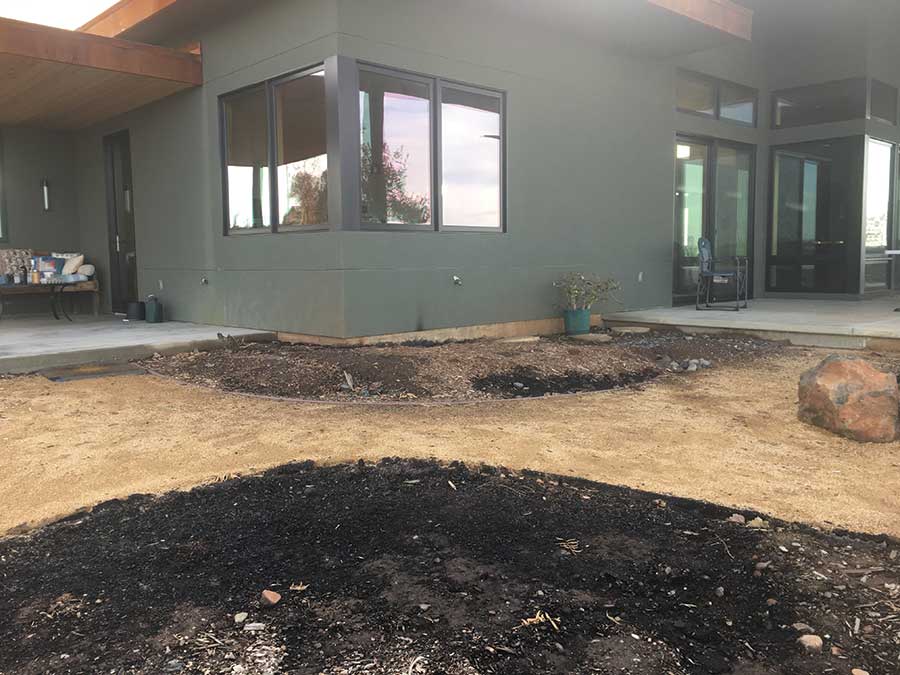
A close look at this ICF home shows that flames charred the stucco under the corner window. Had the home been built with wood, the owner is confident it would
have been a total loss.
A Concrete Home is Saved
Allen Winters built Damon Fanucchi’s Middletown, California, home out of ICF back in 2013—it was Winters’ first ICF build. In 2015, Fanucchi’s Northern California town experienced a wildfire. He was home, with a friend having a drink in the backyard and laughing about the fire they thought would fizzle out.
“It was coming through the meadow, burning grass and was about two feet high and moving slowly,” Fanucchi recalls. “And then the fire people came and forced us to get out.”
Fanucchi says he’s an optimist, so as he was disconnecting his gas tanks and moving his cars, he believed the home would survive. “I didn’t think it would burn,” he says, “but as we left I was a little worried.”
Fanucchi’s home was built with ICF walls and a wooden roof. During the fire, his fences burned and damaged an ICF outbuilding, both of which were 25 to 30 feet away from the home. His house was fine, but two houses around him burned. His roof, he says, should have burned, but didn’t (which he can only attribute to his good luck).
The fire’s intense heat melted the foam underneath the stucco on the damaged outbuilding. “To recreate the foam part of the ICF we had to scrape off the concrete and get foam panels and attach them with concrete screws and washers,” he explains. “Then we skimcoated and applied the stucco the same way we had at the beginning.”
Winters says there are about 500 houses in some stage of construction out of the 1,500 or so that used to stand on the hill near his home. Since the fire, Winters has promoted ICFs by bringing people to the area to view the damaged homes. “People are blown away by it and they’re starting to understand that it may be a good way to go. I expect when everything is said and done, we may have 50 to 100 ICF homes up there,” Winters asserts. “That’s only 10%, and it’s sad because literally everyone else is building with firewood.”
ICF does cost more. “But” he says, “the benefits outweigh the costs by a mile.”
Winters can build a hybrid home (ICF walls and a wooden roof) for 10% more than a stick-built home. “But in some cases, on the right lot, I might beat the wood price, actually,” he says. The problem is, homeowners don’t seem to know this.

Other homes in this neighborhood were completely consumed by flames, but this one—built with Amvic ICFs—survived. The builder
says “Other than the garage door melting and air conditioner condenser controls burning up, the only damage to the property was loss of several trees. The key to the success of this structure were 1. building with fire resistive materials, 2. good defensible space, 3. restricted attic ventilation, 4. no combustible landscaping within 3′ of the building, 5. and really good luck to survive a wind-driven firestorm.
He also says that many of the people rebuilding are his age. He hears people admit that if the hillside burns again in 50 years, they won’t be around for it. “A lot of people are taking that position,” says Winters. “Younger families might think twice, but the state of California is not upping the code requirements up there. I strongly think that California should handle this fire issue the same way they handled the seismic issue.”
After a 7.1 earthquake struck the Loma Prieta area in 1989, California responded rapidly. Winters supplied concrete to 17 homes in a subdivision, and then less than a year later was supplying concrete to other houses utilizing the same engineer. Winters recalls the engineer pointing to the many code changes for seismic safety that had been implemented in just a few months.
“What I was hoping the state of California would do was say, ‘Hey, wait a second, let’s look at how you rebuild in fire-prone areas,'” Winters remarks.
While the citizens are waiting for that to happen, some builders are taking it to the people. Randy Bunnell, president of Amvic Pacific, an Amvic ICF distribution company, attended a spring home show in Chico, California in April, and also plans to attend the fall show in October. “Chico is in Butte County, where Paradise is located, and we had an overwhelming response,” says Bunnell. “When you look at an ICF house you can’t tell the difference between it and a stick-built home, but when they withstand a fire people tend to notice.”
He says the rebuilding process typically takes a couple of years because of the time it takes for insurance companies to settle and to get infrastructure, such as water lines, repaired and back in place, so he expects next year to be big. So far, he says, out of the 14,000 homes that burned, only 78 rebuilding permits have been applied for. Right now, he’s working on two homes in Butte County, both of which burned two years ago.
At the Chico home show, Bunnell encountered both an
educated audience and a searching audience. “People told us, ‘We know we want to build but we don’t want to build with sticks,” Bunnell says. “We were able to tell them this is an alternative. We had people hugging us like we were giving them the opportunity to go back home.”
At the home show, Bunnell says there were several builders advertising to “rebuild Paradise.” He says even the wood builders that were at the home show were very interested in ICF, and he’s going to continue reaching out to them to share information. At a recent builders fair, Bunnell says his table was the first to set up and the last to leave because of the overwhelming response for the need to construct homes that are energy efficient and disaster resistant.
He also attended and presented at a Home Builders Expo sponsored by the Paradise Chamber of Commerce on June 29-30. The expo was specifically for the victims of the Camp Fire that plan on rebuilding in the area. He reports that the event was “Unlike participating in a home and garden show, this show had a very specific market of residents wanting to return home to their community,” he reports. “Four ICF brands were on hand to promote a better way to build. All of them were offering ICF construction at the same pricing as conventional frame construction. The response was tremendous. We received plans from potential clients even before the show had ended.”
Given that the fire happened just last November, things are
a long way from being rebuilt. Many lots are still being cleared, and the state must conduct soil tests before issuing build permits. Bunnell says one factor hampering rebuilding efforts is that Paradise was a popular retirement area. “A lot of people figure they don’t have time to wait for the government so they just left the area completely,” he says. “Some people left because of the PTSD associated with being there.”
Of the 171 building applications submitted to date, none are ICF, but Bunnell predicts that number will increase in the near future as plans are submitted and approved.
Bunnell says it’s a “long haul” but he is committed to getting the word out. He’s preparing presentations to share with building departments and contractors associations. When he does talk to people who know about ICF, it’s often because they’ve done an internet search. They see homes that withstood the fire and they want to know, what did those homeowners do right? Due to the overwhelming destruction, people are educating themselves more, and Bunnell is seeing people becoming more aware about a combination of factors.
“Protecting a home, even an ICF home, is about the type of material used in construction, it’s building to current codes and not codes from 10 years ago, it’s having defensible space,” Bunnell says. “Even an ICF house can suffer damage without the other factors being involved.”
No one wishes for a natural disaster to strike, but we all know they will. And when they do, people in the ICF industry are hoping more people will have experiences like that of Fanucchi. McGarva came to the realization of the power of ICF the hard way. Now, he says, “I would never encourage anybody to even consider building with something other than concrete.”
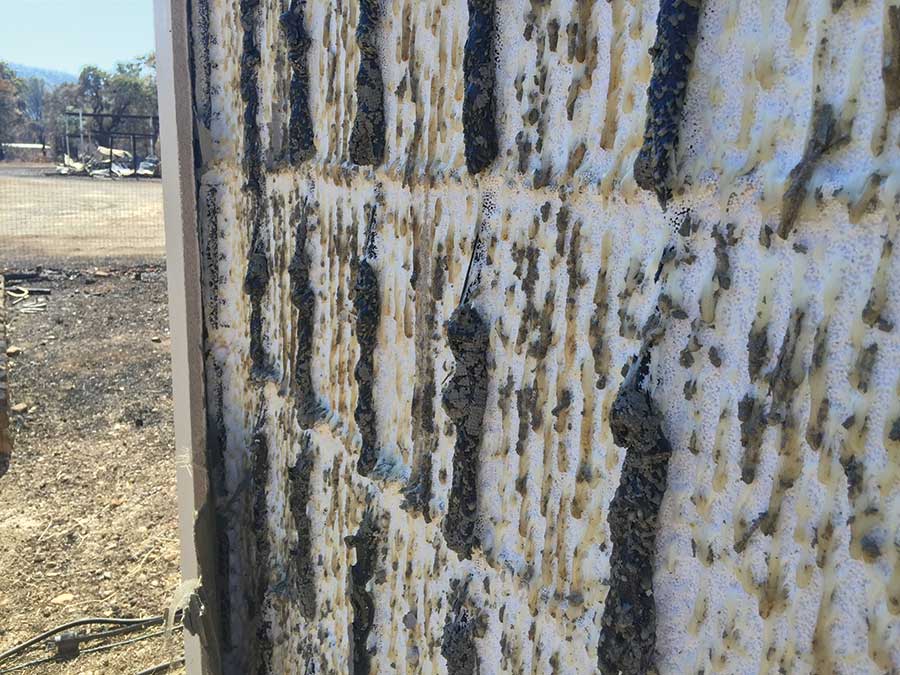
Intense heat melted the foam of this ICF outbuilding underneath the stucco finish, but the concrete core of the wall kept the fire from spreading (top). The damage was repaired by attaching new foam panels with concrete screws, and then skim-coating it with stucco to match the original finish (bottom).

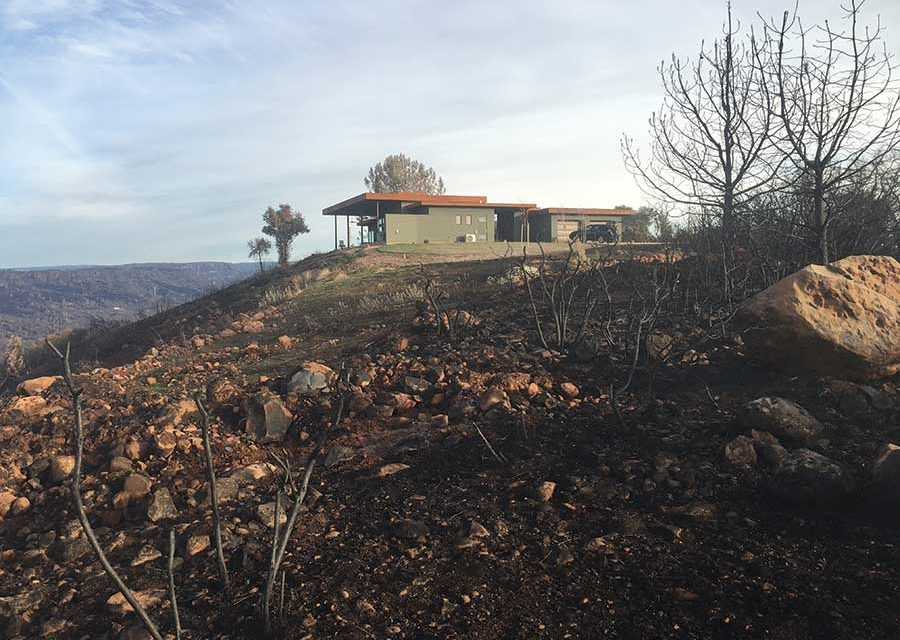
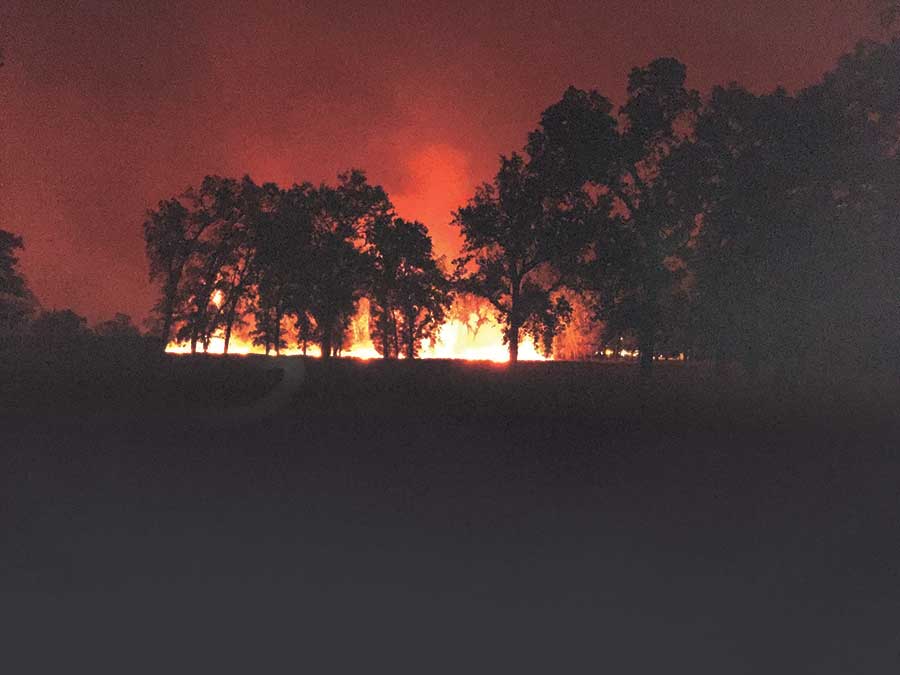
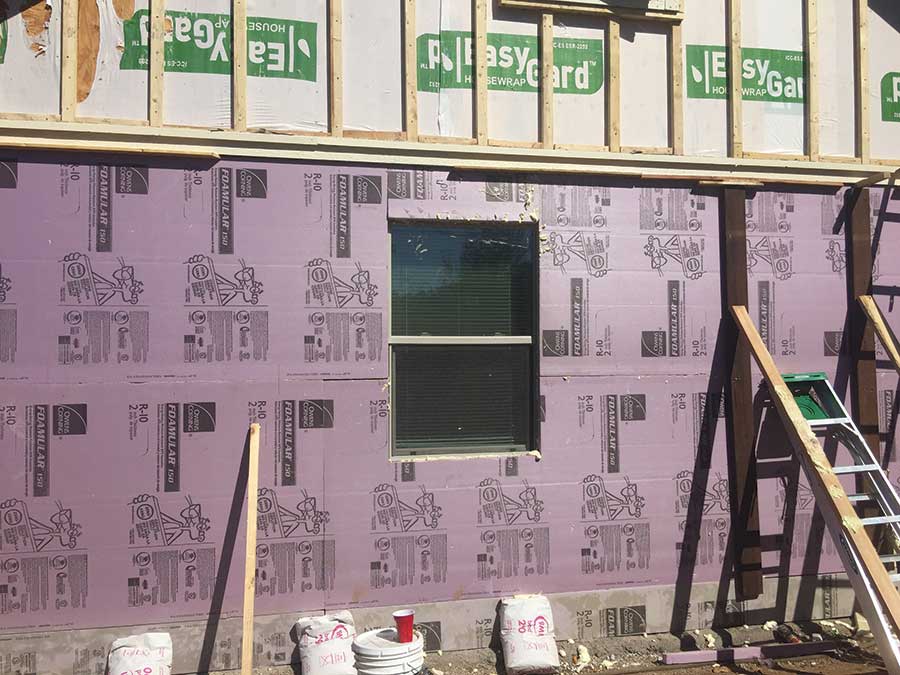

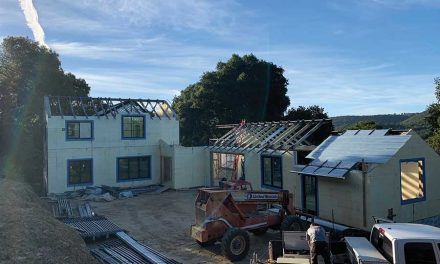
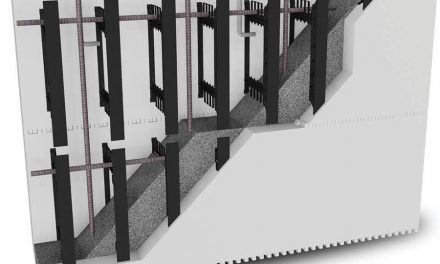
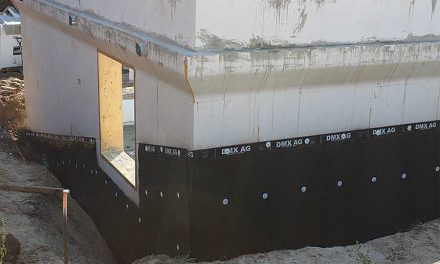
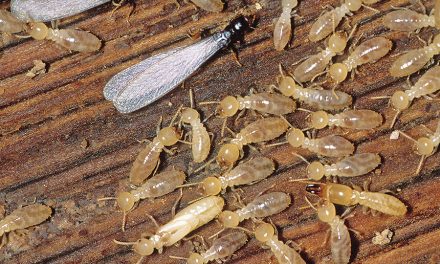








Trackbacks/Pingbacks